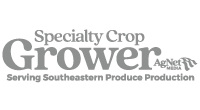The Florida Citrus State of the Industry Survey seeks input from growers on key issues affecting their groves. The survey has been conducted for many years, has tracked the trajectory of HLB and reported on production practices. While not a scientific survey, it has reflected general trends over the years. Last month, we published results on trunk-injection therapy and the impacts of Hurricane Milton. This month, what growers are planting is being shared. Here are more survey results.



Hear John Chater, University of Florida Institute of Food and Agricultural Sciences horticultural scientist, commenting on the survey’s variety and rootstock results.


What has been the most beneficial practice in your citrus grove in recent years to improve tree health?
This was an open-ended question. Forty-seven percent of respondents noted that trunk injection of oxytetracycline (OTC) has been the most beneficial practice. While OTC is aimed at killing the HLB bacteria, many growers also noted that it should be applied in conjunction with solid fertilizer and irrigation programs. The use of individual protective covers on trees to exclude the Asian citrus psyllid was also mentioned by several growers as a tool to protect young trees.
Do you believe in the future of Florida citrus?
This open-ended question drew a wide range of opinions. The impact of HLB and hurricanes has shaken the confidence of growers hoping to keep their businesses viable. But the majority of respondents said they believe in the future, but the industry will need help and will look different. Here’s a sample of responses:
“I believe citrus growers have the tools now to have a successful future, but the losses that occurred in the past three years from two hurricanes puts any future in doubt. Before HLB, you could survive economic setbacks and have confidence in recovery. Now, you get the setback and at best are semi-confident you can grow a tree. I feel the federal government needs to decide if we want a citrus industry in Florida. If we do, we need block-grant funding.”
“Yes, because demand is still there. We just need scions that are tolerant to HLB. Relying on susceptible varieties producing symptomatic fruit is not an option, even with therapeutic treatments. Tolerant varieties exist, and more can be created through conventional breeding.”
“Yes, I believe in the future, but in a totally different way than our industry has seen over the last few decades. We need to add value to our product. I believe our industry may/should become more fresh-fruit oriented. I am not sure that we can compete in a globalized orange juice market. Being able to pick up an extra $1 to $3 per box will help to keep many growers profitable and encouraged about the future.”
Share this Post
Sponsored Content










